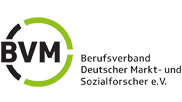





GIM has been researching and advising on consumption, work, health and society internationally and across all sectors for almost 40 years.
We combine innovative market, media and social research with modern methods and comprehensive consulting to ensure your long-term commercial success.

We conduct market research in over 30 industries - B2B and B2C.
Our specialized teams of experts for your key industry ensure that your questions are answered at the highest level of market research.

We regularly publish our own studies, whitepapers and articles mostly free of charge. Our goal is to provide you with practical, useful insights!

What are the core services of the Gesellschaft für innovative Marktforschung (GIM)?
We specialize in customer-exclusive contract research and offer tailor-made market research studies to answer your questions.
What does full-service market research institute mean?
As a full-service market research institute, we take care of the entire research process: from consulting and support in sharpening your research question, consulting and development of the appropriate study design, development of the research instruments, data collection and analysis to reporting.
In special cases, we also offer partial services such as pure data collection or data analysis. Please do not hesitate to contact us.
What kind of clients does GIM conduct research for?
- We support start-ups with the market launch of new products and services,
- help small and medium-sized enterprises (SMEs) to grow through targeted market research and customer understanding,
- and provide corporations with in-depth market knowledge and strategic advice for global market leaders.
Our industry experience ranges from consumer goods in food and beauty to healthcare, automotive and many more. In the public sector, in the area of social research, we conduct research for NGOs, federal agencies and scientific institutions.
What is the advantage of primary market research?
At GIM, our focus is on primary research, as we provide you with exclusive data that offers primary insights into customer needs, market trends and behavioral patterns.
Primary research refers to the independent collection of new data directly from the target group or market. Common methods include interviews, surveys, observations, experiments, focus groups and usability tests.
What is the difference between qualitative and quantitative market research?
Qualitative and quantitative methods complement each other perfectly. At GIM, we use a clever combination of both approaches (mixed methods) where appropriate to provide you with a comprehensive answer to your question. qualitative research is close to your target groups. In smaller samples, qualitative research focuses on understanding behavior, motives and attitudes.
The selection of methods is wide-ranging and can be smartly combined, e.g. by dovetailing a usage diary via smartphone app with in-depth interviews. Projective with creative and implicit methods help to research beyond the rational and uncover emotions and hidden needs. Whether in ethnographic studies, in-depth interviews, focus groups or usability tests, qualitative research helps to understand what makes the target group tick. It provides orientation, feedback on concepts or helps to identify trends and ideas.
Quantitative market research is the systematic collection and analysis of data on a large scale (= large samples) in order to gain quantitative insights into the behavior, attitudes and preferences of consumers or market segments. It focuses on collecting, analyzing and interpreting numerical data in order to support well-founded decisions, and the aim of quantitative market research is to test hypotheses or correlations.
To this end, it uses various forms of data collection (e.g. online or telephone interviews) and a wide range of statistical analysis techniques to analyze data. Quantitative market research thus provides representative, exact and objective statements that allow the results to be quantified and generalized.





